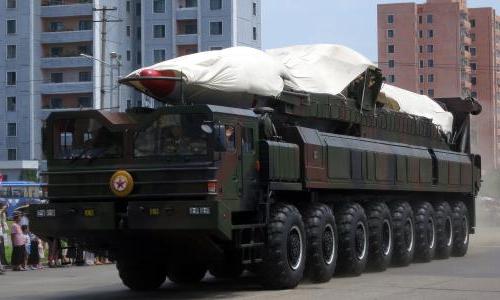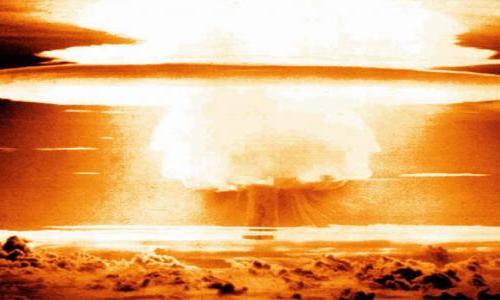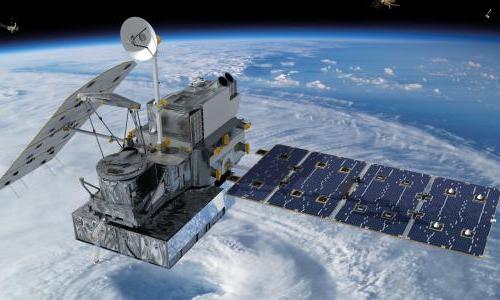What if North Korea or Iran launched a nuclear missile aimed at the United States? 我们能阻止它到达吗?
这就是美国本土导弹防御的基本动机, 一个复杂的地面雷达系统, satellite sensors, 以及用来摧毁来袭弹头的拦截导弹. 系统是否按预期运行, sensors would track intercontinental ballistic missiles (ICBMs) throughout their launch and flight. 拦截导弹 based in Alaska and California would then collide with and destroy the incoming weapons.
In practice, the system struggles to reliably destroy target missiles during test runs, 也不具备应对措施. These issues stem from fundamental problems with how the system is managed, 以及导弹防御技术的517888九五至尊娱乐原理.
导弹防御基础
洲际弹道导弹发射有三个不同的飞行阶段. During the boost phase, 火箭在大气层上空以高速发射弹头, 在真空中继续自由落体. The midcourse phase 从火箭与弹头分离开始, 哪个继续无导向无动力, 在离地球数百英里的高空. The 再入阶段,或末段 sees the warhead descend at high speeds back through the Earth’s atmosphere toward the ground.
GMD vs宙斯盾vs爱国者vs萨德
National missile defense should not be confused with other forms of missile defense, such as the US Navy’s ship-based Aegis Ballistic Missile Defense systems, and the US Army’s Patriot Advanced Capability-3 and Terminal High Altitude Area Defense (THAAD) system.
Those three systems intercept short- and medium-range missiles moving at slower speeds and lower altitudes than ICBMs.
US homeland missile defense (also called “strategic missile defense”) is designed to destroy ICBMs during their midcourse phase, using interceptor missiles launched from the ground (hence the official name, “陆基中段防御,” or GMD).
这个过程从卫星上的红外传感器开始, which monitor known launch locations for the tell-tale heat signature produced by launching rockets. 一旦发射确定, 跟踪被转移到雷达系统, 这有助于确认导弹的弹道吗.
This information is compiled and analyzed by offices of the 美国导弹防御局, and by California’s Vandenberg Air Force Base and Alaska’s Fort Greely, 拦截导弹准备好并发射到哪里.
拦截导弹 consist of a three-stage booster rocket (meaning three engines are used in succession), 还有一个“杀人工具”,它在最后一个助推器分离后独自飞行. 使用截距数据, 杀伤车辆被引导到一个拦截点, 它在哪里用自己的传感器观察目标. From there, 用小型推进器来调整方向, the interceptor attempts to track and collide with the incoming warhead (unlike earlier forms of missile defense, 使用炸药, GMD系统完全依赖于碰撞).

导弹防御系统的问题
虽然基本概念很简单, the reality of homeland missile defense is that it’s enormously complex, expensive, and mired with technical difficulties that lend potential adversaries the upper hand.
这些困难中最主要的是 countermeasures—mechanisms used by an attacking nation to disrupt or undermine the missile defense system. 例如,攻击者可以使用轻量级 decoys 这会迷惑拦截器传感器. Because objects of different weights follow the same trajectory in space, releasing decoys during the midcourse phase can prevent interceptor missiles from accurately identifying the warhead. 这可能迫使导弹防御系统试图摧毁 all of the incoming projectiles, exhausting the limited supply of interceptors.
Similarly, cooled shrouds 可以用来降低弹头的温度吗, rendering it either invisible to interceptor missiles (which use infrared sensors), or reducing the interceptor’s ability to detect the warhead quickly enough.
这两种对策都很好理解, 而且应该能够达到朝鲜的技术能力, Iran, 或者其他国家制造洲际弹道导弹.
Despite this, the Department of Defense has invested over $40 billion in homeland missile defense, without holding it to the same oversight standards that it does other major military systems. This has the counterproductive effect of masking the system’s shortcomings, and may lull officials into a false sense of security—even when it’s clear that interceptor missiles won’t work.
The Union of Concerned Scientists has worked on missile defense issues since the 1980s and is dedicated to truthful commentary about the system’s capabilities and shortcomings.




